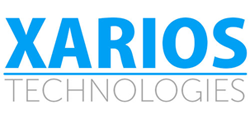

Configuration is required both on the system and the PBX to connect a Mitel MiVoice Business (MCD/3300) phone system.
See the Mitel MiVoice Business (MCD/3300) PBX Supported Versions section for details on the support for the Mitel MiVoice Business (MCD/3300).
Type: Mitel Communications Director.
Name: Enter a friendly name for this PBX connection.
Host: This is the IP address or hostname of the telephone system or the associated PBX.
Cluster Element ID: This is the unique Cluster Element ID for this Mitel MiVoice Business (MCD/3300) controller.
The MCD can export device information to an FTP location on a scheduled basis. Entering these FTP details on the FTP tab will allow device information to be synchronized to the Call Recorder.
FTP Path: This is the FTP path to the exported device information. This should be entered in the form of: myftpsite.host.com/folder/
Username: This is the username to enable the recorder to download configuration information directly from the FTP site.
Password: This is the password to enable the recorder to download configuration information directly from the FTP site.
Delete files after import: This will remove the files imported from the FTP site after the import completes.
Scheduled import: Configure a regular schedule to import the FTP files.
The class of service options for each device on the Mitel MiVoice Business (MCD/3300) needs to have the HCI options allowed. This needs to be done for EVERY class of service option that is in use. See the Mitel MiVoice Business (MCD/3300) Requirements for details.
On MiVoice Business 9.0 and above 'CTI Application Authentication' must be Disabled (default setting).
Any SIP peers that are configured need have the exact same name as the associated Network Element. If the SIP peer and Network Element are already configured then simply renaming will resolve the issue.